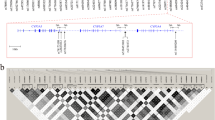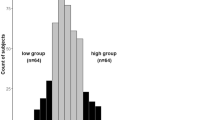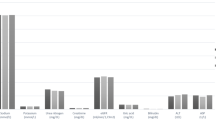Abstract
The highly variable pharmacokinetics and narrow therapeutic window of tacrolimus (TAC) has hampered its clinical use. Genetic polymorphisms may contribute to the variable response, but the evidence is not compelling, and the explanation is unclear. In this study we attempted to find previously unknown genetic factors that may influence the TAC dose requirements. The association of 105 pathway-related single nucleotide polymorphisms (SNPs) with TAC dose-adjusted concentrations (C0/D) was examined at 7, 30 and 90 d post-operation in 382 Chinese kidney transplant recipients. In CYP3A5 non-expressers, the patients carrying the IL-3 rs181781 AA genotype showed a significantly higher TAC logC0/D than those with the AG genotype at 30 and 90 d post-operation (AA vs AG, 2.21±0.06 vs 2.01±0.03, P=0.004; and 2.17±0.06 vs 2.03±0.03, P=0.033, respectively), and than those with the GG genotype at 30 d (AA vs GG, 2.21±0.06 vs 2.04±0.03, P =0.011). At 30 d, the TAC logC0/D in the grouped AG+GG genotypes of CTLA4 rs4553808 was significantly lower than that in the AA genotype (P =0.041) in CYP3A5 expressers, but it was higher (P=0.008) in the non-expressers. We further validated the influence of CYP3A5 rs776746, CYP3A4 rs2242480 and rs4646437 on the TAC C0/D; other candidate SNPs were not associated with the differences in TAC C0/D. In conclusion, genetic polymorphisms in the immune genes IL-3 rs181781 and CTLA4 rs4553808 may influence the TAC C0/D. They may, together with CYP3A5 rs776746, CYP3A4 rs2242480 and rs4646437, contribute to the variation in TAC dose requirements. When conducting individualized therapy with tacrolimus, these genetic factors should be taken into account.
Similar content being viewed by others
Log in or create a free account to read this content
Gain free access to this article, as well as selected content from this journal and more on nature.com
or
References
Rath T . Tacrolimus in transplant rejection. Expert Opin Pharmacother 2013; 14: 115–22.
Barbarino JM, Staatz CE, Venkataramanan R, Klein TE, Altman RB . PharmGKB summary: cyclosporine and tacrolimus pathways. Pharmacogenet Genomics 2013; 23: 563–85.
Venkataramanan R, Swaminathan A, Prasad T, Jain A, Zuckerman S, Warty V, et al. Clinical pharmacokinetics of tacrolimus. Clin Pharmacokinet 1995; 29: 404–30.
Werk AN, Lefeldt S, Bruckmueller H, Hemmrich-Stanisak G, Franke A, Roos M, et al. Identification and characterization of a defective CYP3A4 genotype in a kidney transplant patient with severely diminished tacrolimus clearance. Clin Pharmacol Ther 2014; 95: 416–22.
Birdwell KA, Decker B, Barbarino JM, Peterson JF, Stein CM, Sadee W, et al. Clinical Pharmacogenetics Implementation Consortium (CPIC) guidelines for CYP3A5 genotype and tacrolimus dosing. Clin Pharmacol Ther 2015; 98: 19–24.
Chen YH, Zheng KL, Chen LZ, Dai YP, Fei JG, Qiu J, et al. Clinical pharmacokinetics of tacrolimus after the first oral administration in combination with mycophenolate mofetil and prednisone in Chinese renal transplant recipients. Transplant Proc 2005; 37: 4246–50.
Li CJ, Li L . Tacrolimus in preventing transplant rejection in Chinese patients--optimizing use. Drug Des Devel Ther 2015; 9: 473–85.
Elens L, Bouamar R, Shuker N, Hesselink DA, van Gelder T, van Schaik RH . Clinical implementation of pharmacogenetics in kidney transplantation: calcineurin inhibitors in the starting blocks. Br J Clin Pharmacol 2014; 77: 715–28.
Wang P, Mao Y, Razo J, Zhou X, Wong ST, Patel S, et al. Using genetic and clinical factors to predict tacrolimus dose in renal transplant recipients. Pharmacogenomics 2010; 11: 1389–402.
Kurzawski M, Drozdzik M . Pharmacogenetics in solid organ transplantation: genes involved in mechanism of action and pharmacokinetics of immunosuppressive drugs. Pharmacogenomics 2013; 14: 1099–118.
Hesselink DA, Bouamar R, Elens L, van Schaik RH, van Gelder T . The role of pharmacogenetics in the disposition of and response to tacrolimus in solid organ transplantation. Clin Pharmacokinet 2014; 53: 123–39.
Rojas L, Neumann I, Herrero MJ, Boso V, Reig J, Poveda JL, et al. Effect of CYP3A5*3 on kidney transplant recipients treated with tacrolimus: a systematic review and meta-analysis of observational studies. Pharmacogenomics J 2015; 15: 38–48.
Elens L, Capron A, van Schaik RH, De Meyer M, De Pauw L, Eddour DC, et al. Impact of CYP3A4*22 allele on tacrolimus pharmacokinetics in early period after renal transplantation: toward updated genotype-based dosage guidelines. Ther Drug Monit 2013; 35: 608–16.
Moes DJ, Swen JJ, den Hartigh J, van der Straaten T, van der Heide JJ, Sanders JS, et al. Effect of CYP3A4*22, CYP3A5*3, and CYP3A combined genotypes on cyclosporine, everolimus, and tacrolimus pharmacokinetics in renal transplantation. CPT Pharmacometrics Syst Pharmacol 2014; 3: e100.
Lunde I, Bremer S, Midtvedt K, Mohebi B, Dahl M, Bergan S, et al. The influence of CYP3A, PPARA, and POR genetic variants on the pharmacokinetics of tacrolimus and cyclosporine in renal transplant recipients. Eur J Clin Pharmacol 2014; 70: 685–93.
de Jonge H, Elens L, de Loor H, van Schaik RH, Kuypers DR . The CYP3A4*22 C>T single nucleotide polymorphism is associated with reduced midazolam and tacrolimus clearance in stable renal allograft recipients. Pharmacogenomics J 2015; 15: 144–52.
Shi WL, Tang HL, Zhai SD . Effects of the CYP3A4*1B genetic polymorphism on the pharmacokinetics of tacrolimus in adult renal transplant recipients: a meta-analysis. PLoS One 2015; 10: e0127995.
Cusinato DA, Lacchini R, Romao EA, Moyses-Neto M, Coelho EB . Relationship of CYP3A5 genotype and ABCB1 diplotype to tacrolimus disposition in Brazilian kidney transplant patients. Br J Clin Pharmacol 2014; 78: 364–72.
Li CJ, Li L, Lin L, Jiang HX, Zhong ZY, Li WM, et al. Impact of the CYP3A5, CYP3A4, COMT, IL-10 and POR genetic polymorphisms on tacrolimus metabolism in Chinese renal transplant recipients. PLoS One 2014; 9: e86206.
Wang Z, Wu S, Chen D, Guo F, Zhong L, Fan J, et al. Influence of TLR4 rs1927907 locus polymorphisms on tacrolimus pharmacokinetics in the early stage after liver transplantation. Eur J Clin Pharmacol 2014; 70: 925–31.
Seyhun Y, Ciftci HS, Kekik C, Karadeniz MS, Tefik T, Nane I, et al. Genetic association of interleukin-2, interleukin-4, interleukin-6, transforming growth factor-beta, tumour necrosis factor-alpha and blood concentrations of calcineurin inhibitors in Turkish renal transplant patients. Int J Immunogenet 2015; 42: 147–60.
Xing J, Zhang X, Fan J, Shen B, Men T, Wang J . Association between interleukin-18 promoter variants and tacrolimus pharmacokinetics in Chinese renal transplant patients. Eur J Clin Pharmacol 2015; 71: 191–8.
Li L, Li CJ, Zheng L, Zhang YJ, Jiang HX, Si-Tu B, et al. Tacrolimus dosing in Chinese renal transplant recipients: a population-based pharmacogenetics study. Eur J Clin Pharmacol 2011; 67: 787–95.
Tholking G, Fortmann C, Koch R, Gerth HU, Pabst D, Pavenstadt H, et al. The tacrolimus metabolism rate influences renal function after kidney transplantation. PLoS One 2014; 9: e111128.
Lesche D, Sigurdardottir V, Setoud R, Oberhansli M, Carrel T, Fiedler GM, et al. CYP3A5*3 and POR*28 genetic variants influence the required dose of tacrolimus in heart transplant recipients. Ther Drug Monit 2014; 36: 710–5.
Bouqbis L, Izaabel H, Akhayat O, Perez-Lezaun A, Calafell F, Bertranpetit J, et al. Association of the CTLA4 promoter region (-1661G allele) with type 1 diabetes in the South Moroccan population. Genes Immun 2003; 4: 132–7.
Lee DY, Song SB, Moon JY, Jeong KH, Park SJ, Kim HJ, et al. Association between interleukin-3 gene polymorphism and acute rejection after kidney transplantation. Transplant Proc 2010; 42: 4501–4.
Teft WA, Kirchhof MG, Madrenas J . A molecular perspective of CTLA-4 function. Annu Rev Immunol 2006; 24: 65–97.
Canossi A, Aureli A, Delreno F, Iesari S, Cervelli C, Clemente K, et al. Influence of cytotoxic T-lymphocyte antigen-4 polymorphisms on acute rejection onset of cadaveric renal transplants. Transplant Proc 2013; 45: 2645–9.
Misra MK, Kapoor R, Pandey SK, Sharma RK, Agrawal S . Association of CTLA-4 gene polymorphism with end-stage renal disease and renal allograft outcome. J Interferon Cytokine Res 2014; 34: 148–61.
Gao JW, Guo YF, Fan Y, Qiu JX, Bao ED, Liu Y, et al. Polymorphisms in cytotoxic T lymphocyte associated antigen-4 influence the rate of acute rejection after renal transplantation in 167 Chinese recipients. Transpl Immunol 2012; 26: 207–11.
Ruhi C, Sallakci N, Yegin O, Suleymanlar G, Ersoy FF . The influence of CTLA-4 single nucleotide polymorphisms on acute kidney allograft rejection in Turkish patients. Clin Transplant 2015; 29: 612–8.
Guo Y, Guo F, Wei C, Qiu J, Liu Y, Fang Y, et al. CTLA4 gene polymorphisms influence the incidence of infection after renal transplantation in Chinese recipients. PLoS One 2013; 8: e70824.
Geng R, Song F, Yang X, Sun P, Hu J, Zhu C, et al. Association between cytotoxic T lymphocyte antigen-4 +49A/G, -1722T/C, and -1661A/G polymorphisms and cancer risk: a meta-analysis. Tumour Biol 2014; 35: 3627–39.
Wen J, Ji ZG, Niu JR . Regulatory effects of cyclosporin A and tacrolimus on the immunological gene expressions in renal transplant recipients. Zhongguo Yi Xue Ke Xue Yuan Xue Bao 2012; 34: 563–6.
James DG . A new immunosuppressant: tacrolimus. Postgrad Med J 19963; 72: 586.
Fan J, Zhang X, Ren L, Chen D, Wu S, Guo F, et al. Donor IL-18 rs5744247 polymorphism as a new biomarker of tacrolimus elimination in Chinese liver transplant patients during the early post-transplantation period: results from two cohort studies. Pharmacogenomics 2015; 16: 239–50.
Zhang X, Wang Z, Fan J, Liu G, Peng Z . Impact of interleukin-10 gene polymorphisms on tacrolimus dosing requirements in Chinese liver transplant patients during the early posttransplantation period. Eur J Clin Pharmacol 2011; 67: 803–13.
Gorski JC, Hall SD, Becker P, Affrime MB, Cutler DL, Haehner-Daniels B . In vivo effects of interleukin-10 on human cytochrome P450 activity. Clin Pharmacol Ther 2000; 67: 32–43.
Crettol S, Venetz JP, Fontana M, Aubert JD, Pascual M, Eap CB . CYP3A7, CYP3A5, CYP3A4, and ABCB1 genetic polymorphisms, cyclosporine concentration, and dose requirement in transplant recipients. Ther Drug Monit 2008; 30: 689–99.
Zuo XC, Ng CM, Barrett JS, Luo AJ, Zhang BK, Deng CH, et al. Effects of CYP3A4 and CYP3A5 polymorphisms on tacrolimus pharmacokinetics in Chinese adult renal transplant recipients: a population pharmacokinetic analysis. Pharmacogenet Genomics 2013; 23: 251–61.
He BX, Shi L, Qiu J, Tao L, Li R, Yang L, et al. A functional polymorphism in the CYP3A4 gene is associated with increased risk of coronary heart disease in the Chinese Han population. Basic Clin Pharmacol Toxicol 2011; 108: 208–13.
Acknowledgements
This work was supported by the National Key Research and Development Program (No 2016YFC0905000), the National High Technology Research and Development Program of China, the “863” Project (No 2012AA02A518), the National Natural Science Foundation of China (No 81522048, 81573511, and 81273595), and the Innovation Driven Project of Central South University (No 2016CX024).
Author information
Authors and Affiliations
Corresponding authors
Additional information
Supplementary information is available at website of Acta Pharmacologica Sinica.
Supplementary information
Supplementary Figure S1
Consort diagram of patients selection (JPG 270 kb)
Supplementary Table S1
Clinical characteristics of recipients based on rs2242480 genotypes. (DOC 42 kb)
Supplementary Table S2
Clinical characteristics of recipients based on rs4646437 genotypes. (DOC 44 kb)
Supplementary Table S3
Clinical characteristics of recipients based on rs181781 genotypes. (DOC 43 kb)
Supplementary Table S4
Clinical characteristics of recipients based on rs1641536 genotypes. (DOC 43 kb)
Supplementary Table S5
Clinical characteristics of recipients based on rs776746 genotypes. (DOC 43 kb)
Supplementary Table S6
Clinical characteristics of recipients based on rs4553808 genotypes. (DOC 43 kb)
Supplementary Table S7
Clinical characteristics: CYP 3A5 rs776746 (AA&AG vs GG). (DOC 43 kb)
Rights and permissions
About this article
Cite this article
Liu, Mz., He, Hy., Zhang, Yl. et al. IL-3 and CTLA4 gene polymorphisms may influence the tacrolimus dose requirement in Chinese kidney transplant recipients. Acta Pharmacol Sin 38, 415–423 (2017). https://doi.org/10.1038/aps.2016.153
Received:
Accepted:
Published:
Issue date:
DOI: https://doi.org/10.1038/aps.2016.153
Keywords
This article is cited by
-
Functional CYP3A variants affecting tacrolimus trough blood concentrations in Chinese renal transplant recipients
The Pharmacogenomics Journal (2021)
-
The impact of IL-10 and CYP3A5 gene polymorphisms on dose-adjusted trough blood tacrolimus concentrations in early post-renal transplant recipients
Pharmacological Reports (2021)
-
Impact of single nucleotide polymorphisms on P450 oxidoreductase and peroxisome proliferator-activated receptor alpha on tacrolimus pharmacokinetics in renal transplant recipients
The Pharmacogenomics Journal (2019)
-
Whole exome sequencing for the identification of CYP3A7 variants associated with tacrolimus concentrations in kidney transplant patients
Scientific Reports (2018)



